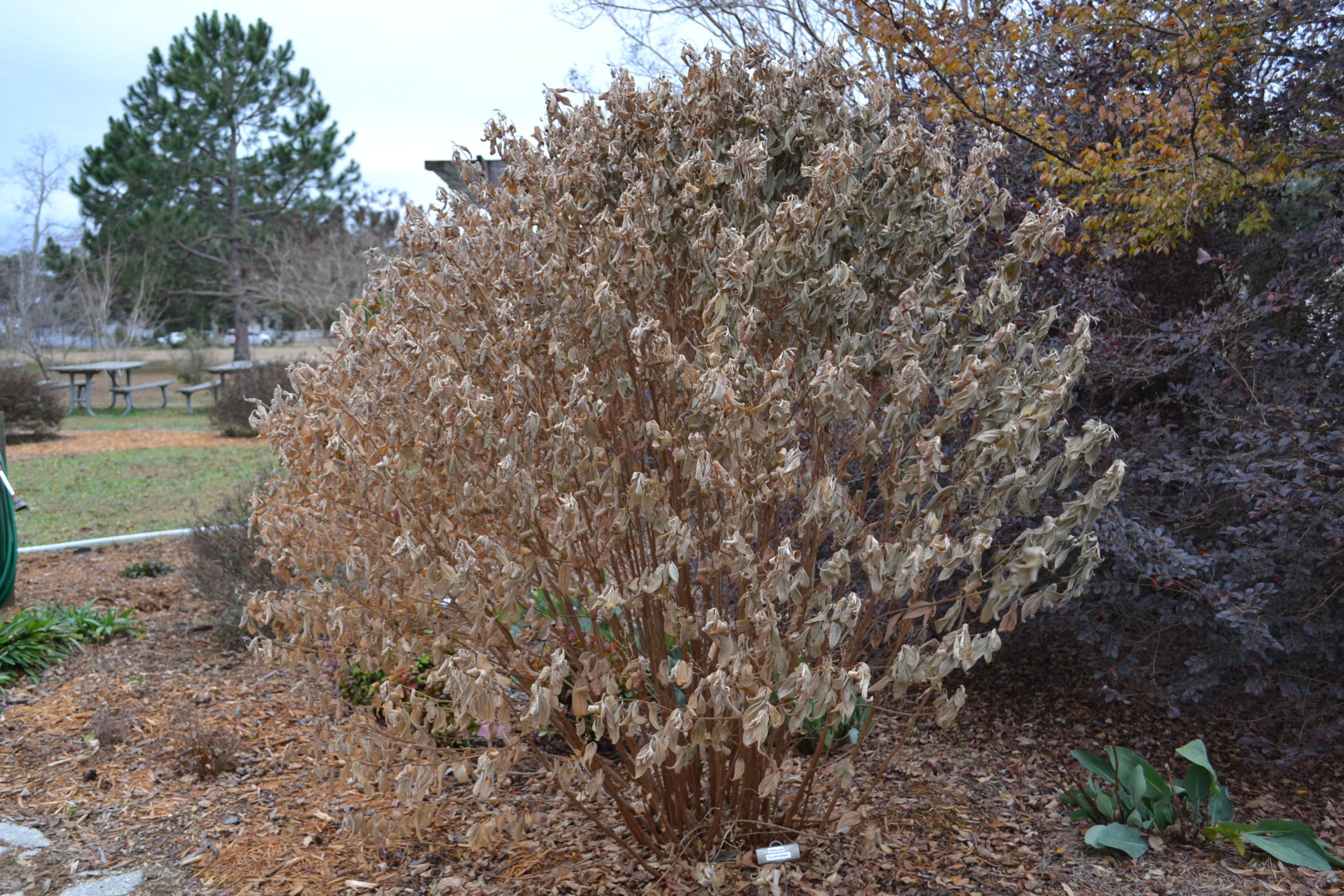
by Matthew Orwat | Feb 10, 2016
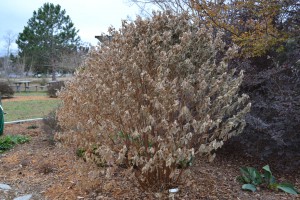
Image Credit: Beth Bolles
Although it is quite cold outside right now, spring is just around the corner. Many of us have perennials we enjoyed all summer and fall, and have been faced with their ugly dead stalks all winter. Perennials that are meant to die to the ground each winter look ugly and decayed after the first frost. For many perennials, the stalks have been left up and allowed to slowly die, allowing nutrients to be slowly translocated to the root system.
Many perennials, such as hibiscus species, hydrangea, salvia species, firebush (Hamelia patens), rudbeckia, echinacea, lantana and others still have a large amount of starch stored in their branches, even after the first frost. Although it was very tempting to remove these unattractive reminders of the beautiful spring gardening season, hopefully you waited to allow the starch to translocate (move) down to the root system.
Now through early March is the time to remove those unsightly dead branches to living tissue. To determine if there is “life” left in those burned and singed stems, just scratch off the top layer of the stem. If any nutrients remain in the stem, it will be green or yellow where the scratch was made. Another good way to determine if it is a good time to cut perennials back, since coastal and inland locales differ climactically, is to observe the beginning of new growth and trim at that time. If it is brown it’s dead, cut it back!
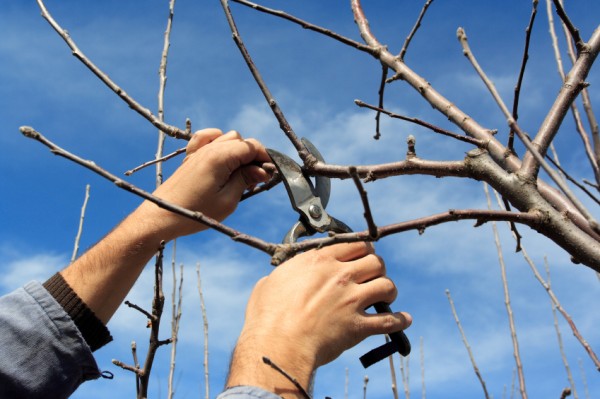
by Sheila Dunning | Dec 16, 2015
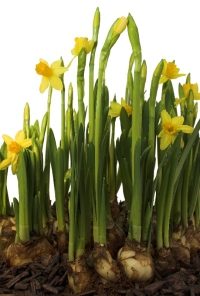
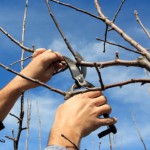 Though the calendar says December, the weather in Northwest Florida fluctuates between winter and spring temperatures. The nice days are wonderful opportunities to accomplish many of those outside landscape chores in preparation for spring. But, it is also a good time to start planning for next month’s colder temperatures. Since we don’t experience frozen soil, winter is the best time to transplant hardy trees and shrubs. Deciduous trees establish root systems more quickly while dormant; versus installing them in the spring with all their tender new leaves. Here are a few suggestions for tasks that can be performed this month:
Though the calendar says December, the weather in Northwest Florida fluctuates between winter and spring temperatures. The nice days are wonderful opportunities to accomplish many of those outside landscape chores in preparation for spring. But, it is also a good time to start planning for next month’s colder temperatures. Since we don’t experience frozen soil, winter is the best time to transplant hardy trees and shrubs. Deciduous trees establish root systems more quickly while dormant; versus installing them in the spring with all their tender new leaves. Here are a few suggestions for tasks that can be performed this month:
- Plant shade trees, fruit trees, and evergreen shrubs.
- Plant pre-chilled daffodil and narcissus bulbs (late December/early January).
- Do major re-shaping of shade trees, if needed, during the winter dormancy.
- Water live Christmas trees as needed and water holiday plants such as poinsettias as needed.
- Check houseplants for insect pests such as scale, mealy bugs, fungus gnats, whitefly and spider mites.
- Continue to mulch leaves from the lawn. Shred excess leaves and add to planting beds or compost pile.
- Replenish finished compost and mulch in planting beds, preferably before the first freeze.
- Switch sprinkler systems to ‘Manual’ mode for the balance of winter.
- Water thoroughly before a hard freeze to reduce plants’ chances of damage.
- Water lawn and all other plants once every three weeks or so, if supplemental rainfall is less than one inch in a three week period.
- Fertilize pansies and other winter annuals as needed.
- Protect tender plants from hard freezes.
- Be sure to clean, sharpen and repair all your garden and lawn tools. Now is also the best time to clean and have your power mower, edger and trimmer serviced.
- Be sure the mower blade is sharpened and balanced as well.
- Provide food and water to the area’s wintering birds.
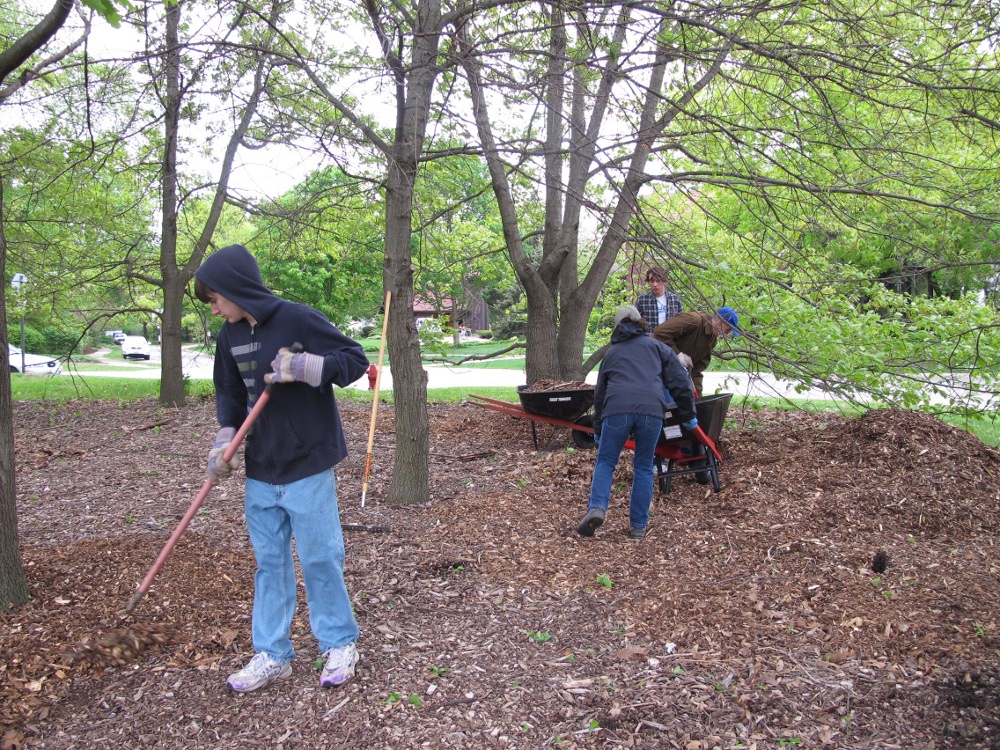
by Matthew Orwat | Sep 9, 2015

Azaleas pruned late in the fall will have little or no bloom in the spring. Image Credit: Matthew Orwat
As fall approaches, our spring blooming shrubs such as gardenia, spirea and azalea begin to look unkempt and overgrown. That means it is time to give them a severe pruning to get them ready for winter, right? Not so fast, take a minute to understand the growth habit of each species before diving in with the pruning shears.
Azalea:
Many do not understand that annual spring azalea bloom could be sacrificed completely by pruning spring blooming azaleas at the wrong time.
Pruning traditional azaleas in the fall will result in a loss of spring bloom the following year because most bloom on previous years’ wood. This means that they flower on growth put on throughout the previous growing season. If a gardener removes the previous season’s new growth, they are removing the blooms as well.
So, when is the proper time to prune azaleas? The ideal time to prune is directly after the spring bloom. This will give the plant enough time to generate abundant new growth, thus maximizing bloom next spring.
Even the developers of the Encore Azalea, a new repeat blooming type, recommend pruning as soon after the spring bloom as possible to maximize bloom set for the following year.
For more information on pruning azaleas or on general azalea culture, please read the UF / IFAS publication Azaleas at a Glance or check out the Pruning Azalea page on Gardening in a Minute.
Gardenia:
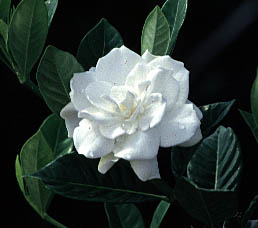
Gardenia, Image Credit Dan Culbert.
Gardenias don’t need much pruning except to remove any dead or non-productive wood, to help them remain bushy, and to remain the same size as other plants in the landscape. Choose a cultivar that will mimic the size of other shrubs, not one too large for the area. Pruning should be done as soon after the summer bloom as possible. Pruning after the beginning of fall will reduce the next year’s bloom production. Know your cultivar. Some cultivars of gardenia flower on new wood as well as old, while some flower on old wood only.
Spiraea:
Regarding spiraea, prune after the bloom as needed. The closer to the late summer or autumn, the greater negative effect pruning will have on bloom quality since spirea set their bloom in early autumn.
I hope this article prevented a few pruning disasters as well as started a thinking process for the act of pruning your landscape plants.
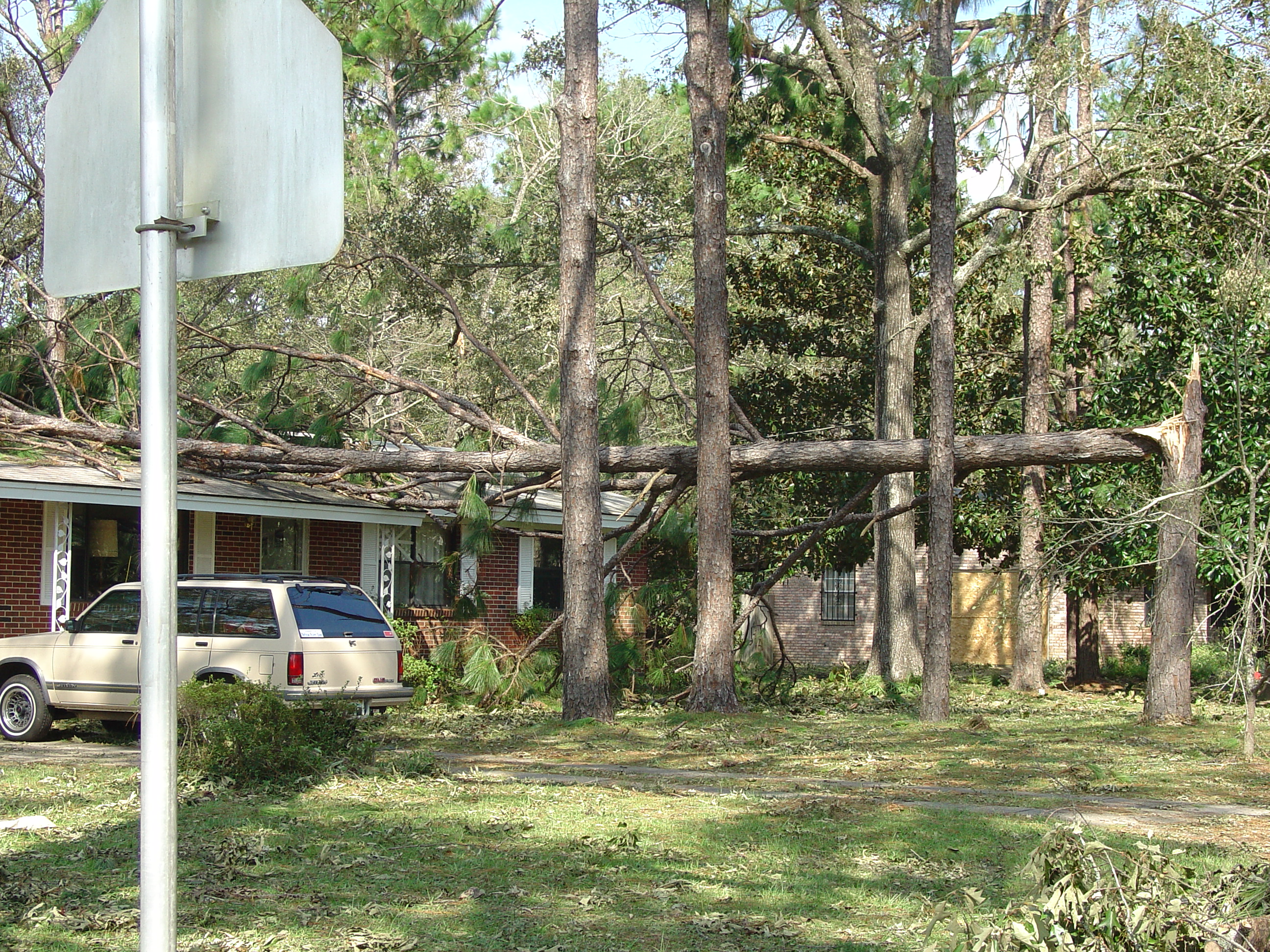
by Larry Williams | Sep 3, 2015
Tropical storm season officially ends November 30. I’m not predicting a storm but even with our average winds during a typical thunderstorm, you’d be wise to prepare.
Falling trees and flying landscape debris during a storm can cause damage. Evaluate your landscape for potential tree hazards. Pruning or removing trees once a hurricane watch has been announced is risky and tree trimming debris left along the street is hazardous.
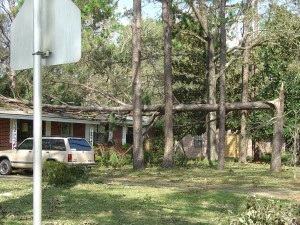
Photo credit: Larry Williams, UF/IFAS.
Now is a good time to remove dead or dying trees and to prune decayed or dead branches Also inspect trees for signs of disease or insect infestation that may further weaken them.
Professional help sometimes is your best option when dealing with larger jobs. Property damage could be reduced by having a professional arborist evaluate unhealthy, injured or questionable trees to assess risk and treat problems. Hiring a certified arborist can be a worthwhile investment. To find a certified arborist in your area contact the International Society of Arboriculture (ISA) at 217-355-9411 or at www.isa-arbor.com. You also may contact the Florida Chapter of ISA at 941-342-0153 or at www.floridaisa.org.
Consider removing trees that have low wind resistance, are at the end of their life span or that have potential to endanger lives or property. For example, laurel oaks are relatively short-lived, usually showing considerable dieback as they reach 50 years. They tend to lose their strength and stability faster than most other oaks and have low wind resistance. Consider removing a big, old laurel oak within falling distance of your home before the next storm.
Tree species with the lowest wind resistance include pecan, tulip poplar, cherry laurel, Bradford pear, southern red oak, laurel oak, water oak, Chinese tallow, Chinese elm, southern red cedar, Leyland cypress, sand pine and spruce pine.
Pine species vary in their wind resistance, usually with longleaf and slash pines showing better survival rates than loblolly and sand pine. However, when pines become large, they may cause damage if located close to homes or other valuable structures.
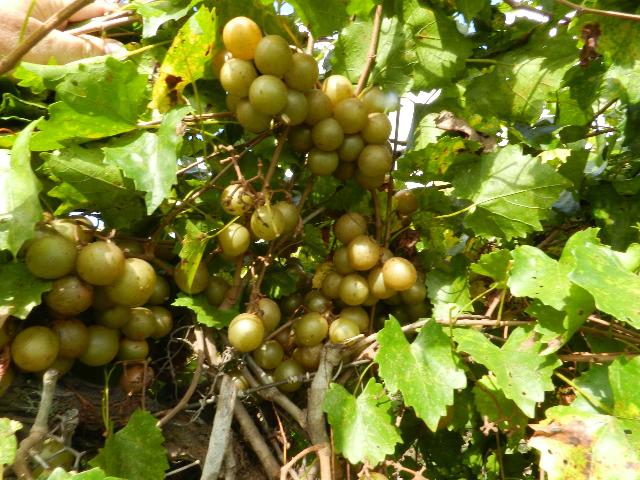
by Matthew Orwat | Aug 3, 2015

Muscadine cluster Credit: Peter C. Andersen, UF/IFAS Extension
Muscadines are a terrific grapey treat this time of year ’till fall throughout North Florida. To grow muscadines well in the home garden, care must be taken when pruning to maximize spatial efficiency and yield.
August is the very beginning of the muscadine harvest in the Florida Panhandle, which may last until October. Therefore it is also the time to begin thinking about pruning.
Once harvest concludes, it is usually a gardeners’ natural inclination to immediately prune their muscadine vines. This fast action is not the best for plant condition and next year’s yield, especially if there is an early frost. Early frosts surprise the plant before sugars have been moved to the roots for storage during dormancy. Therefore, waiting to prune in mid January to mid March will ensure that the vine has had adequate time to go dormant and acclimate to the winter season. A good rule of thumb is to wait to prune until bud swell or even first leaves emerge. This will greatly reduce the chance that vines are damaged by late frosts.
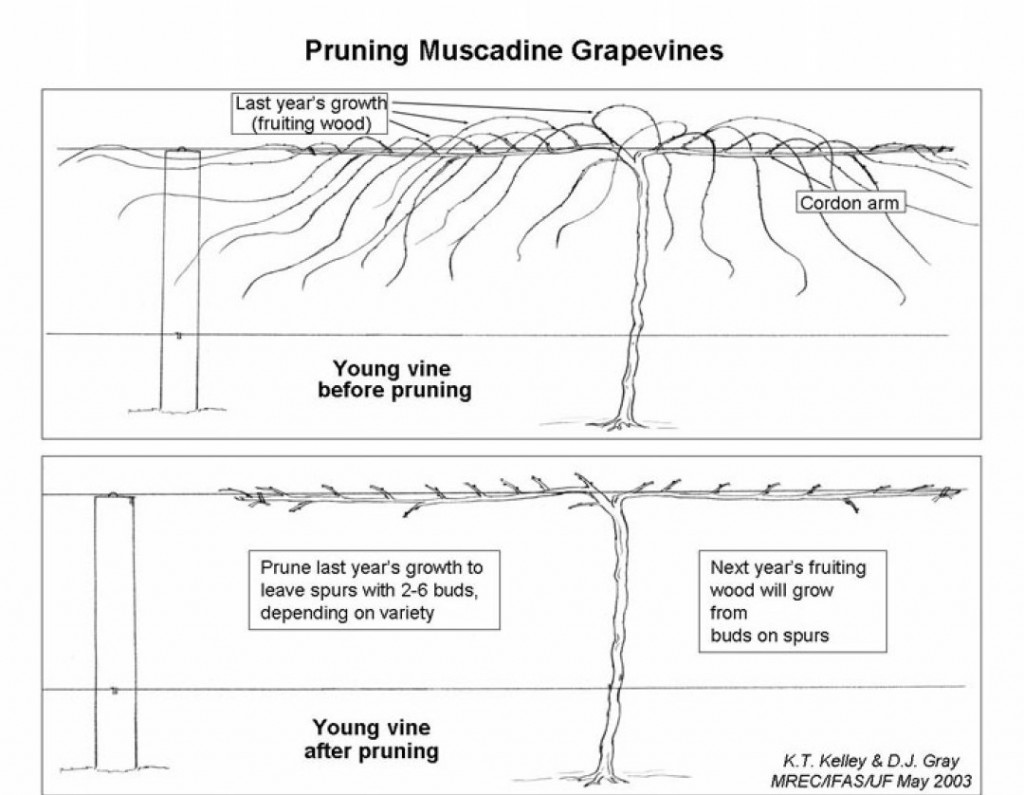
K.T. Kelly and JH. D. Gray, MREC/ UF/IFAS Extension 2003
Muscadines flower and fruit on shoots from current, not previous, years growth. These new bearing shoots arise from the leaf axils of the previous years’ growth. Pictured above is the bi-lateral cordon training system. This is the most popular system for muscadine production. Pruning must be performed to maintain this configuration. If vines are too vigorous, it is acceptable to prune lightly throughout the growing season.
Vines must also be trimmed before herbicide application at least 2 feet from the ground. Nonselective systemic herbicides don’t harm tissue with bark, but must not come in contact with green tissue or it will be translocated to the roots and damage the plant.
Using a bi-lateral cordon system, there are two main branches or “cordons” of the vine. Along each cordon, fruiting spurs should be spaced approximately every six inches. Each fruiting spur should contain 2-4 nodes.
If fruiting spurs become more than one foot from the cordon, it is time for spur renewal. This is typically done every 3-6 years. Entire spurs can be removed if they lose productivity and replaced by new shoots. Additionally, cordons may lose productivity or die off after 5 to 10 years of production. If this occurs, simply remove the cordon and train a new or existing branch into a new cordon.
Pruning with a design in mind and at the proper time will enhance performance and longevity of muscadines in the home garden.
Information from this article was derived from HS763 The Muscadine Grape












